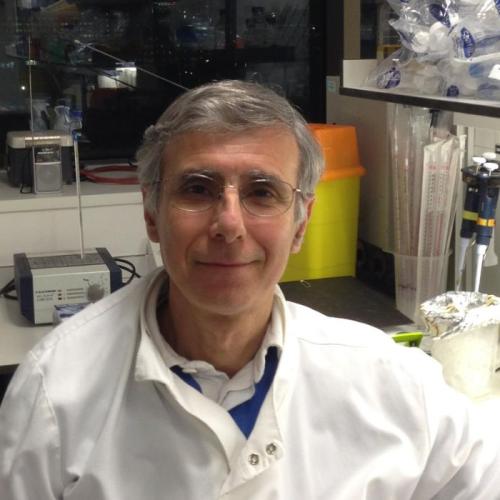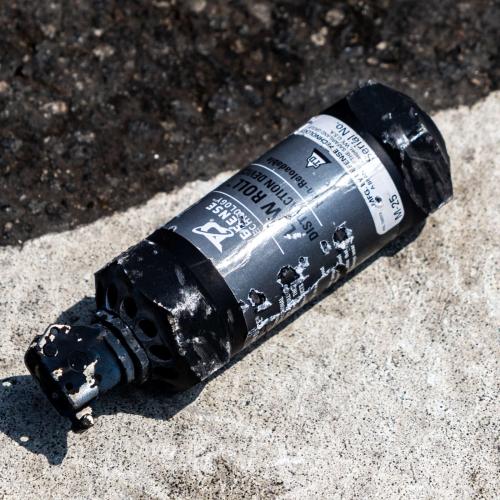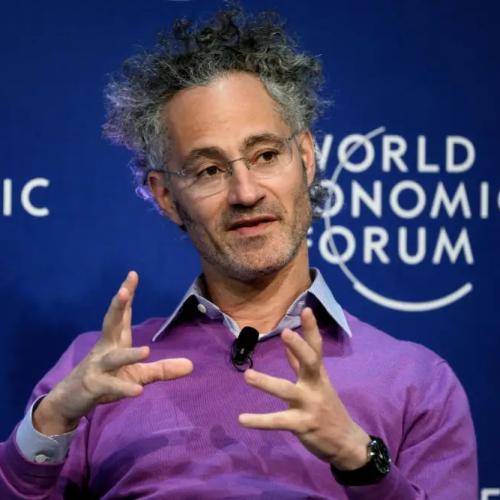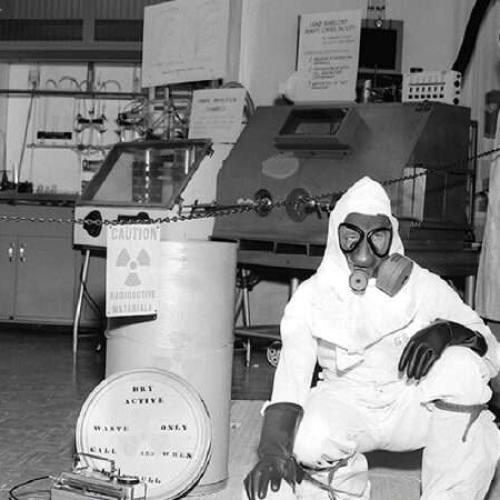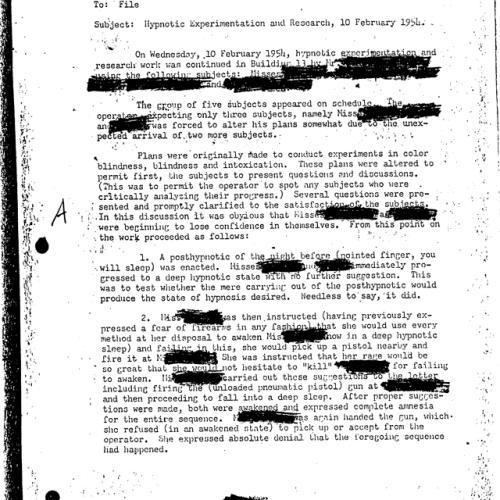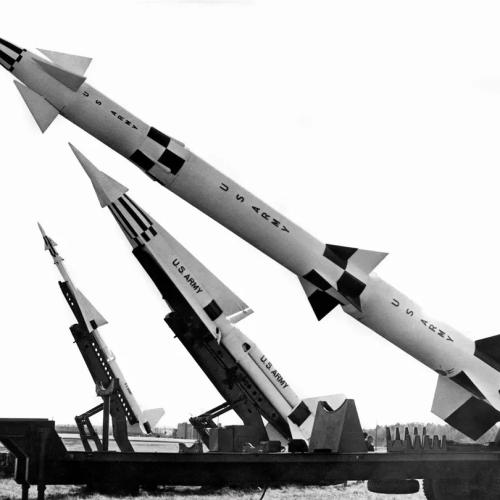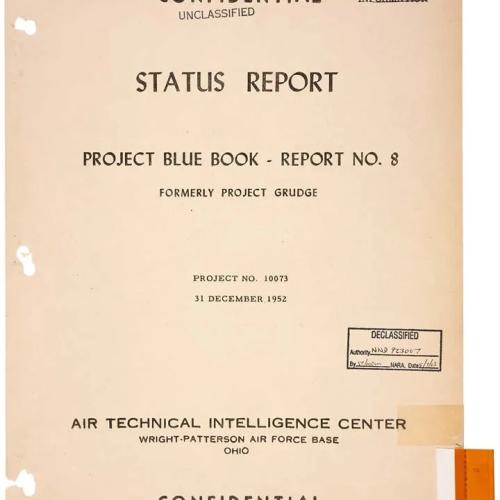Energy Inventions News Articles
Below are key excerpts of revealing news articles on energy inventions from reliable news media sources. If any link fails to function, a paywall blocks full access, or the article is no longer available, try these digital tools.
For further exploration, delve into our Energy Information Center.
Its often smarter to borrow from nature than reinvent the wheel. That was the approach of researchers at the University of Illinois at Chicago (UIC) to remove carbon dioxide (CO2) from the atmosphere, and convert it into an efficient, inexpensive fuel. The result: an artificial leaf that turns CO2 into fuel, "at a cost comparable to a gallon of gasoline" could render fossil fuel obsolete, according to the researchers. The leaf is one of a growing number of inventions that mimic photosynthesis to remove excess carbon from the atmosphere, and convert it into new, sustainable forms of energy to power our world. The new solar cell is not photovoltaic - its photosynthetic, said [the studys lead author] Amin Salehi-Khojin. Instead of producing energy in an unsustainable one-way route from fossil fuels to greenhouse gas, we can now reverse the process and recycle atmospheric carbon into fuel using sunlight." The concept of reduction reaction - converting CO2 into a burnable form of carbon - isnt new. But scientists previously relied on silver and other expensive precious metals to break gas into storable energy. UIC researchers took a different approach. When light strikes the "leaf," hydrogen and carbon monoxide bubble from the cathode, while free oxygen and hydrogen ions are released from the anode. Leafs could be spread throughout a solar farm, or used in smaller applications, the researchers said.
Note: Explore a treasure trove of concise summaries of incredibly inspiring news articles which will inspire you to make a difference.
Entrepreneurs and established companies alike depend on the U.S. Patent and Trademark Office. Newly released documents reveal that the office, tasked with evaluating and protecting the rights to intellectual property, has a covert system for delaying controversial or inconvenient patents. Its a system that ... could function as a way to limit or stomp out emerging companies. Before today, the program named the Sensitive Application Warning System (SAWS) has been mentioned only anecdotally by examiners who work in or with the office, and in a government memo that was leaked in March 2006. However, a new 50-page document obtained by a law firms Freedom of Information Act request shows the sweeping scope and conflicting interests of this particular set of rules. The law firm behind the request, Kilpatrick Townsend & Stockton LLP, frequently represents major tech companies, including Apple, Google, Twitter, and Oracle. For Thomas Franklin, a partner at Kilpatrick Townsend, applications that he prosecutes typically issue as patents 22 months after filing. Any application that is categorized in SAWS, however ... can be delayed for years. There is no official channel to notify an applicant once her patent is placed in the system. Franklin told Yahoo Tech., Thats what piqued my interest as a constitutional issue. Theres a secret program that theyre not supposed to talk about.
Note: When the government has a "property interest" in any patent application, it may be rejected, stolen, or classified according to secret criteria. Among new energy technology researchers, it is well known that the patent office can block patents of amazing inventions that could cost oil and energy companies billions of dollars. Read this excellent summary for more on this.
After decades of experiments, U.S. Navy scientists believe they may have solved one of the worlds great challenges: how to turn seawater into fuel. The development of a liquid hydrocarbon fuel could one day relieve the militarys dependence on oil-based fuels and is being heralded as a game changer because it could allow military ships to develop their own fuel and stay operational 100 percent of the time, rather than having to refuel at sea. The new fuel is initially expected to cost around $3 to $6 per gallon, according to the U.S. Naval Research Laboratory, which has already flown a model aircraft on it. The Navys 289 vessels all rely on oil-based fuel, with the exception of some aircraft carriers and 72 submarines that rely on nuclear propulsion. The breakthrough came after scientists developed a way to extract carbon dioxide and hydrogen gas from seawater. The gasses are then turned into a fuel by a gas-to-liquids process with the help of catalytic converters. The next challenge for the Navy is to produce the fuel in industrial quantities. It will also partner with universities to maximize the amount of CO2 and carbon they can recapture. For the first time we've been able to develop a technology to get CO2 and hydrogen from seawater simultaneously. That's a big breakthrough," said Dr. Heather Willauer, a research chemist who has spent nearly a decade on the project, adding that the fuel "doesn't look or smell very different."
Note: Strangely, the major media networks appear to be largely silent on this important breakthrough, except for Forbes, which downplays the whole thing, as you can see at this link. For a treasure trove of great news articles which will inspire you to make a difference, click here.
BlackLight Power, Inc. [has] achieved sustained electricity production from a primary new energy source by using photovoltaic technology to transform brilliant plasma, with power comprising millions of watts of light, directly into electricity. By applying a very high current through its proprietary water-based solid fuel in BlackLight Powers breakthrough Solid Fuel-Catalyst-Induced-Hydrino-Transition (SF-CIHT) technology, water ignites into brilliant plasma, a ... bright flash of extraordinary optical power that has a power density of over 1,000,000 times that of any prior controllable reaction. BlackLight Power has now successfully converted the brilliant plasma directly into electricity using photovoltaic cells (solar cells). Simply replacing the consumed H2O regenerated the fuel, and the fuel can be continuously fed into the electrodes to continuously output optical power that can be converted into electricity. [This] safe, non-polluting power-producing system catalytically converts the hydrogen of the H2O-based solid fuel into a non-polluting ... lower-energy state hydrogen called Hydrino, by allowing the electrons to fall to smaller radii around the nucleus. The energy release is 200 times that of burning the equivalent amount of hydrogen with oxygen. Using readily-available components, BlackLight has developed a system engineering design of an electric generator that is closed, except for the addition of H2O fuel, and generates ten million watts of electricity, enough to power ten thousand homes. Remarkably, the device is less than a cubic foot in volume.
Note: How strange that the major media are not picking up on this story of major proportions. For a 2008 CNN article showing Blacklight had attracted $60 million and was no longer seeking funding, click here. For more on Blacklight Power, click here. For more evaluation of this development, click here.
Waiting hours for a cellphone to charge may become a thing of the past, thanks to an 18-year-old high-school student's invention. She won a $50,000 prize ... at an international science fair for creating an energy storage device that can be fully juiced in 20 to 30 seconds. The fast-charging device is a [type of] so-called supercapacitor, a gizmo that can pack a lot of energy into a tiny space, charges quickly and holds its charge for a long time. What's more, it can last for 10,000 charge-recharge cycles, compared with 1,000 cycles for conventional rechargeable batteries, according to [the inventor] Eesha Khare of Saratoga, Calif. Supercapacitors also allowed her to focus on her interest in nanochemistry "really working at the nanoscale to make significant advances in many different fields." To date, she has used [her] supercapacitor to power a light-emitting diode, or LED. The invention's future is even brighter. She sees it fitting inside cellphones and the other portable electronic devices that are proliferating in today's world, freeing people and their gadgets for a longer time from reliance on electrical outlets. "It is also flexible, so it can be used in rollup displays and clothing and fabric," Khare added. "It has a lot of different applications and advantages over batteries in that sense." Khare's invention won her the Intel Foundation Young Scientist Award at the Intel International Science and Engineering Fair, conducted ... in Phoenix, Ariz.
Note: Now let's see if it actually makes it to market or is blocked by the companies that profit from selling many chargers. For a treasure trove of great news articles which will inspire you to make a difference, click here.
Four teenage African girls have come up with a urine-powered generator ... which they claim generates one hour of electricity from one liter (about a quart) of urine. The pee-powered product made its debut at Maker Faire Africa in Lagos, Nigeria. Urine is put into an electrolytic cell, which separates out the hydrogen. The gas cylinder pushes hydrogen into a cylinder of liquid borax, which is used to remove the moisture from the hydrogen gas. This purified hydrogen gas is pushed into the generator. The girls will probably be famous chemists one day, in any case, but they aren't the first to propose urine (or more solid human and animal waste) as a possible alternative fuel. Last year, in one example, researchers from Ohio University came up with their own technology for extracting hydrogen from urine. Doing so, they say, requires less power than plucking it from water, as hydrogen can be separated more easily from the ammonia and urea chemical compounds present in pee. The four African teens likely are the youngest researchers yet to dabble in pee as power. Skepticism aside, can we all just agree that the foursome should be lauded for their efforts to find alternative power sources on a continent that could really use them?
Note: For a treasure trove of great news articles which will inspire you to make a difference, click here.
A University of Missouri professor has resurrected his two-decade-old work in the contested field of cold fusion. In 1991, Mark Prelas was part of a research team that conducted a fusion experiment that emitted a burst of millions of neutrons. The work stopped when funding was cut off. At the time, cold fusion claims had been dismissed as junk science. Prelas shifted to other work. But his neutron-producing experiment resumed this year, and he presented his findings at a cold fusion conference in August in South Korea. Prelas, now a professor in the university's Nuclear Science and Engineering Institute, received funding from the Sidney Kimmel Institute for Nuclear Renaissance at MU. In the original experiment, the team created an emitted neutron-recording device and expected to count about 10 neutrons a second. They reached a million neutrons in a second. With SKINR funding, [Prelas] re-created the experiment. More technologically advanced equipment has allowed for a better counting system, and in one run, his research team saw neutron emissions at similar levels to the 1991 observation. Rob Duncan, MU's vice chancellor of research, said ... "We've got to understand what this is. The focus clearly has to be on an opportunity to discover new physics and to understand new science. That really is our aim here at SKINR.
Note: For deeply revealing reports from reliable major media sources on new energy inventions, click here.
Italian physicist and inventor Andrea Rossi has conducted a public demonstration of his "cold fusion" machine, the E-Cat, at the University of Bologna, showing that a small amount of input energy drives an unexplained reaction between atoms of hydrogen and nickel that leads to a large outpouring of energy, more than 10 times what was put in. The first seemingly successful cold fusion experiment was reported two decades ago. Two types of atoms, typically a light element and a heavier metal, seem to fuse together, releasing pure heat that can be converted into electricity. The process is an attractive energy solution for two reasons: Unlike in nuclear fission, the reaction doesn't give off dangerous radiation. Unlike the fusion processes that take place in the sun, cold fusion doesn't require extremely high temperatures. In April ... Rossi and fellow physicist Sergio Focardi successfully demonstrated the device for a group of Swedish physicists. At the demo in October, after an initial energy input of 400 watts into each module, each one then produced a sustained, continuous output of 10 kilowatts (470 kW altogether) for three to four hours. Peter Hagelstein, an MIT professor of electrical engineering and computer science and one of the most mainstream proponents of cold fusion research, thinks the process may involve vibrational energy in the metal's lattice driving nuclear transitions that lead to fusion.
Note: For lots more on this exciting development, click here. And for a CBS video segment and another excellent documentary showing top researchers who continue to be very excited about results of ongoing cold fusion experiments, click here. For media reports on other suppressed new energy inventions, click here.
A physicist in Italy claims to have demonstrated a new type of power plant that provides safe, cheap and virtually unlimited nuclear power to the world, without fossil fuels or radiation concerns. The only hitch: Scientists say the method -- cold fusion -- is patently impossible. They say it defies the laws of physics. Andrea Rossi doesn't seem to care. He told FoxNews.com that his new device takes in nickel and hydrogen and fuses them in a low-grade nuclear reaction that essentially spits out sheer power, validating the strange science. With low energy, it's possible to give a heater a certain amount of energy and to get from the same heater a superior amount of energy, Rossi explained. He claims he demonstrated the device, called an E-Cat, at the University of Bologna in Italy on Oct. 28. Nearly a century ago, in the 1920s, Austrian scientists Friedrich Paneth and Kurt Peters hypothesized a form of nuclear reaction that doesnt produce radiation. And since then, the theory of cold fusion -- or "low-energy nuclear reaction," as its champions now call it -- has popped in and out the public's eyes, notably hitting the cover of Time magazine in 1989. Sterling Allan, CEO of the alternative energy news agency Pure Energy Systems, told FoxNews.com he attended Rossis demonstration and the E-Cat is self sustaining.
Note: For lots more on this exciting development, click here. And for a CBS video segment and another excellent documentary showing top researchers who continue to be very excited about results of ongoing cold fusion experiments, click here. For media reports on other suppressed new energy inventions, click here.
Hybrid vehicles are still tethered to the gas pump via a fuel-thirsty 100-year-old invention: the internal combustion engine. However, researchers at Michigan State University have built a prototype gasoline engine that requires no transmission, crankshaft, pistons, valves, fuel compression, cooling systems or fluids. Their so-called Wave Disk Generator could greatly improve the efficiency of gas-electric hybrid automobiles and potentially decrease auto emissions up to 90 percent when compared with conventional combustion engines. The engine has a rotor that's equipped with wave-like channels that trap and mix oxygen and fuel as the rotor spins. These central inlets are blocked off, building pressure within the chamber, causing a shock wave that ignites the compressed air and fuel to transmit energy. The Wave Disk Generator uses 60 percent of its fuel for propulsion; standard car engines use just 15 percent. As a result, the generator is 3.5 times more fuel efficient than typical combustion engines. Researchers estimate the new model could shave almost 1,000 pounds off a car's weight currently taken up by conventional engine systems. Last week, the prototype was presented to the energy division of the Advanced Research Projects Agency, which is backing the Michigan State University Engine Research Laboratory with $2.5 million in funding. Michigan State's team of engineers hope to have a car-sized 25-kilowatt version of the prototype ready by the end of the year.
Note: For many inspiring new developments on automotive technology, click here.
A Massachusetts biotechnology company says it can produce the fuel that runs Jaguars and jet engines using the same ingredients that make grass grow. Joule Unlimited has invented a genetically-engineered organism that it says simply secretes diesel fuel or ethanol wherever it finds sunlight, water and carbon dioxide. [The] company says it can manipulate the organism to produce the renewable fuels on demand at unprecedented rates, and can do it in facilities large and small at costs comparable to the cheapest fossil fuels. What can it mean? No less than "energy independence," Joule's web site tells the world, even if the world's not quite convinced. "We make some lofty claims, all of which we believe, all which we've validated," said Joule chief executive Bill Sims. Joule was founded in 2007. In the last year, it's roughly doubled its employees to 70, closed a $30 million second round of private funding in April and added John Podesta, former White House chief of staff under President Bill Clinton, to its board of directors. The company worked in "stealth mode" for a couple years before it recently began revealing more about what it was doing. This month, it released a peer-reviewed paper it says backs its claims. Joule says its organisms secrete a completed product, already identical to ethanol and the components of diesel fuel, then live on to keep producing it at remarkable rates. Joule claims, for instance, that its cyanobacterium can produce 15,000 gallons of diesel full per acre annually, over four times more than the most efficient algal process for making fuel. And they say they can do it at $30 a barrel. The company plans to break ground on a 10-acre demonstration facility this year, and Sims says they could be operating commercially in less than two years.
Note: For many other fascinating new energy inventions reported in the major media which should be making news headlines, click here. For a powerful two-page summary showing why these amazing inventions get so little attention and are sometimes even suppressed, click here.
A Navy-funded thermal engine bobbing off the coast of Hawaii is accomplishing a rare feat -- it produces more energy than it consumes. Though it's not quite a perpetual motion machine, it could provide scientists or the Navy with a perpetual presence on the seas. The engine is attached to an unmanned underwater vessel, called SOLO-TREC, and uses the energy of the ocean to derive a practically limitless energy supply. SOLO-TREC is outfitted with a series of tubes full of waxy phase-change materials. As the float encounters warm temperatures near the ocean's surface, the materials expand; when it dives and the waters grow cooler, the materials contract. The expansion and contraction pressurizes oil, which drives a hydraulic motor. The motor generates electricity and recharges the batteries, which power a pump. The pump can change the float's buoyancy, allowing it to move up and down the water column. "In theory what you have now is unlimited endurance for something that has this type of engine," said Thomas Swean Jr., team leader for ocean engineering and marine systems at the Office of Naval Research, which funded the project. "Other things can break, but as far as the energy source, it will only stop working if the ocean ran out of energy, which is unlikely to happen."
Note: For lots more from major media sources on promising new energy inventions, click here.
Is the economic, social and physical deterioration that has caused so much misery in the Motor City a sign of whats in store for larger and larger segments of the United States? I found real reason to hope when a gentleman named Stan Ovshinsky took me on a tour of a remarkably quiet and pristine manufacturing plant ... about 30 miles north of Detroit. What is being produced in the plant is potentially revolutionary. A machine about the length of a football field runs 24 hours a day, seven days a week, turning out mile after mile after mile of thin, flexible solar energy material, from which solar panels can be sliced and shaped. Mr. Ovshinsky ... developed the technology and designed the production method that made it possible to produce solar material by the mile. He invented the nickel metal hydride battery that is in virtually all hybrid vehicles on the road today. When I pulled into the parking lot outside his office ... he promptly installed me in the drivers seat of a hydrogen hybrid prototype a car in which the gasoline tank had been replaced with a safe solid-state hydrogen storage system invented by Mr. Ovshinsky. Whats weird is that this man, with such a stellar track record of innovation on products and processes crucial to the economic and environmental health of the U.S., gets such little attention and so little support from American policy makers. In addition to his work with batteries, photovoltaics and hydrogen fuel cells, his inventions have helped open the door to flat-screen televisions, new forms of computer memory and on and on.
Note: Ovshinsky has been at the forefront of new energy breakthroughs for years, yet has received very little press, likely because his inventions threaten the established oil industry. For a powerful, three-minute video showing how some of his key inventions have been shelved because they threatened profits, click here.
Volkswagen has a new car in pre-production that, the automaker estimates, could get up to 282 mpg. That's not a misprint. Autoblog explains, "A few years back, Volkswagen introduced a concept vehicle," known as the VW 1L, "which derived its name from its stated goal of using just one liter of fuel per one-hundred kilometers traveled." The concept "actually beat its lofty goal rather handily as it managed to achieve a miserly 282 miles per gallon in testing. Much of its amazing fuel-saving capability stemmed from its 660 pounds (300 kilograms) curb weight. The concept also featured a single cylinder engine and a 1+1 seating arrangement down the center of the car." The U.K.'s Car Magazine reports, "At the time the chairman of VW's supervisory board predicted that the super-economical two-seater would go into productionin 2012. Now the VW 1L will hit the market two years ahead of schedule, in 2010." Whether the 1L would be sold in the U.S. market isn't yet clear.
Note: Any bets on whether this car will actually go into production and be promoted? Check out what happened to the Eco Spirit, which got over 100 mpg at this link.
What we drive in the future may not be designed in Detroit, or Tokyo or Stuttgart, but on the college campuses of North America. Teams of students from 17 colleges and universities in the United States and Canada have spent the last three years taking apart models of a Chevrolet Equinox, and re-designing and re-fitting the crossover SUV to get better fuel efficiency than the engineers and designers at General Motors have been able to achieve. It's called Challenge X. So what did these college teams come up with? They came up with bio-diesel, ethanol, hydrogen, hybrid electric, plug-in electric - with most of the teams using two of these energy sources together. The team from Penn State created an Equinox that runs on three fuels: bio-diesel, hydrogen and electric hybrid power. "The way it's designed, it's always burning hydrogen and bio-diesel together, and the hybrid motor turns on and off," explained Nate Simmons. The team from San Diego State created a bio-diesel electric hybrid, and transformed the transmission from automatic to manual for even better gas mileage. They were able to boost the EPA rating for the conventional Equinox from a rating of 23 miles per gallon highway up into the low 30s. "We set out to produce the most powerful vehicle in the competition," said faculty advisor James Burns. This year's winner was Mississippi State University, for its bio-diesel hybrid electric design. The MSU vehicle is powered by a 1.9-liter GM direct injection turbo-diesel engine, fueled by bio-diesel (B20). It won for achieving a whopping 38 percent increase in fuel economy over the production-model Equinox.
Note: College and even high school students have been beating car manufacturers for years, yet the media seem to largely ignore this. For striking examples, click here and here.
As countries and cities around the world move to ban plastic bags, a Canadian teenager is tackling the problem of what to do with them. High school student Daniel Burd successfully isolated microorganisms from soil and used them to help degrade 43 percent of his polyethylene sample within a few weeks in a science project that recently won him the C$10,000 ($9,800) top prize at the Canada-Wide Science Fair. "The purpose of my project was to first of all prove that it's possible to do the degradation, and I just wanted to develop a beginning procedure that could be used," said the 17-year-old Grade 11 student, who also walked away with nearly C$35,000 in university scholarship offers. "We know that after 40 to 100,000 years, the plastic bags will be degraded naturally. Some type of microbe must be responsible for this. So the first step was to isolate this microbe and that's what I did," said Burd, who began his research in December 2006. To isolate the microorganism, he turned the plastic bags into a powder -- an important step, Burd said, because it increases the surface area and helps the microorganisms that can use the plastic to grow. Once he had the powder, he collected soil samples from a landfill, and combined the two with a home-made solution that would encourage microorganism growth. After months of experimenting, he isolated two microbial strains from the genuses sphingomonas and pseudomonas. Burd worked with the microbes to find the combination that would degrade strips of plastic bags best, and optimized the process by factoring in elements such as temperature and concentration of microbes. "In the end I was able to find that after six weeks incubation 43 percent of my plastic bag is degraded."
Note: Why wasn't this all over the news? Very few media outlets covered this highly inspiring story. For a more recent article on this fascinating topic, click here.
Thane Heins is nervous and hopeful. In four days the Ottawa-area native will travel to Boston where he'll demonstrate an invention that appears ... to operate as a perpetual motion machine. The audience, esteemed Massachusetts Institute of Technology professor Markus Zahn, could either deflate Heins' heretical claims or add momentum to a 20-year obsession. Zahn is a leading expert on electromagnetic and electronic systems. In a rare move for any reputable academic, he has agreed to give Heins' creation an open-minded look rather than greet it with outright dismissal. The invention ... could moderately improve the efficiency of induction motors, used in everything from electric cars to ceiling fans. At best it means a way of tapping the mysterious powers of electromagnetic fields to produce more work out of less effort, seemingly creating electricity from nothing. Heins has modified his test so the effects observed are difficult to deny. He holds a permanent magnet a few centimetres away from the driveshaft of an electric motor, and the magnetic field it creates causes the motor to accelerate. Contacted by phone a few hours after the test, Zahn is genuinely stumped and surprised. He said the magnet shouldn't cause acceleration. "It's an unusual phenomenon I wouldn't have predicted in advance. But I saw it. It's real. To my mind this is unexpected and new," he [said]. "There are an infinite number of induction machines in people's homes and everywhere around the world. If you could make them more efficient, cumulatively, it could make a big difference."
Note: For a treasure trove of reports on new energy breakthroughs from reliable, verifiable sources, click here.
In 2000 Jonathan Goodwin, a self-described "gearhead", bought his first Hummer, an old H1, in Denver, Colorado. "The thing did eight miles to the gallon and nought to 60 in about two days," he recalls. On his drive home to Wichita, Kansas, it broke down three times. The engine died. Rather than fix the engine, he replaced it with a new Duramax diesel and doubled the fuel economy to 20 miles per US gallon (equivalent to 24 miles per Imperial gallon), tripled the horsepower to 600 and quadrupled the torque to 1,200ft lbs. Driven by his quest for more power and less consumption he had inadvertently stumbled across a solution for America's SUV-loving masses. The byproduct of the system he installed is lower emissions - a greener output for these thirsty beasts. "Now we can have our cake and eat it," he says. "It's difficult for these huge companies. The technology is there to make cars that have vastly improved consumption figures already, but they're driven by the need to sell all the cars they currently make," Goodwin says. "If they announced they were bringing out a 100mpg car then no-one would buy the old line." Goodwin sees three stages to a process of change: converting all autos to diesel which can then run on biofuel, making the step to bio-electric and finally to hydroelectric, meaning cars will run on water.
Note: For more on this amazing man and his cool inventions, click here.
Everything that goes into Frank Pringles recycling machine a piece of tire, a rock, a plastic cup turns to oil and natural gas seconds later. Ive been told the oil companies might try to assassinate me, Pringle says without sarcasm. The machine is a microwave emitter that extracts the petroleum and gas hidden inside everyday objects. Every hour, the first commercial version will turn 10 tons of auto waste tires, plastic, vinyl into enough natural gas to produce 17 million BTUs of energy (it will use 956,000 of those BTUs to keep itself running). Pringle created the machine about 10 years ago after he drove by a massive tire fire and thought about the energy being released. He went home and threw bits of a tire in a microwave emitter hed been working with for another project. It turned to what looked like ash, but a few hours later, he returned and found a black puddle on the floor of the unheated workshop. Somehow, hed struck oil. Or rather, he had extracted it. Petroleum is composed of strings of hydrocarbon molecules. When microwaves hit the tire, they crack the molecular chains and break it into its component parts: carbon black (an ash-like raw material) and hydrocarbon gases, which can be burned or condensed into liquid fuel. If the process worked on tires, he thought, it should work on anything with hydrocarbons. The trick was in finding the optimum microwave frequency for each material. In 2004 he teamed up with engineer pal Hawk Hogan to take the machine commercial. Their first order is under construction in Rockford, Illinois. Its a $5.1-million microwave machine the size of small bus called the Hawk, bound for an auto-recycler in Long Island, New York. Oil companies are looking to the machines to gasify petroleum trapped in shale.
Note: For many exciting breakthroughs in new energy technologies, click here.
Imagine a solar panel without the panel. Just a coating, thin as a layer of paint, that takes light and converts it to electricity. From there, you can picture roof shingles with solar cells built inside and window coatings that seem to suck power from the air. Consider solar-powered buildings stretching not just across sunny Southern California, but through China and India and Kenya as well, because even in those countries, going solar will be cheaper than burning coal. Thats the promise of thin-film solar cells: solar power thats ubiquitous because its cheap. The basic technology has been around for decades, but this year, Silicon Valleybased Nanosolar created the manufacturing technology that could make that promise a reality. The company produces its PowerSheet solar cells with printing-press-style machines that set down a layer of solar-absorbing nano-ink onto metal sheets as thin as aluminum foil, so the panels can be made for about a tenth of what current panels cost and at a rate of several hundred feet per minute. Nanosolars first commercial cells rolled off the presses this year. Cost has always been one of solars biggest problems. Traditional solar cells require silicon, and silicon is an expensive commodity. That means even the cheapest solar panels cost about $3 per watt of energy they go on to produce. To compete with coal, that figure has to shrink to just $1 per watt. Nanosolars cells use no silicon, and the companys manufacturing process allows it to create cells that are as efficient as most commercial cells for as little as 30 cents a watt. "It really is quite a big deal in terms of altering the way we think about solar and in inherently altering the economics of solar," says Dan Kammen, founding director of the Renewable and Appropriate Energy Laboratory at the University of California at Berkeley.
Note: For exciting reports of other new energy technologies, click here.
Important Note: Explore our full index to revealing excerpts of key major media news articles on several dozen engaging topics. And don't miss amazing excerpts from 20 of the most revealing news articles ever published.













